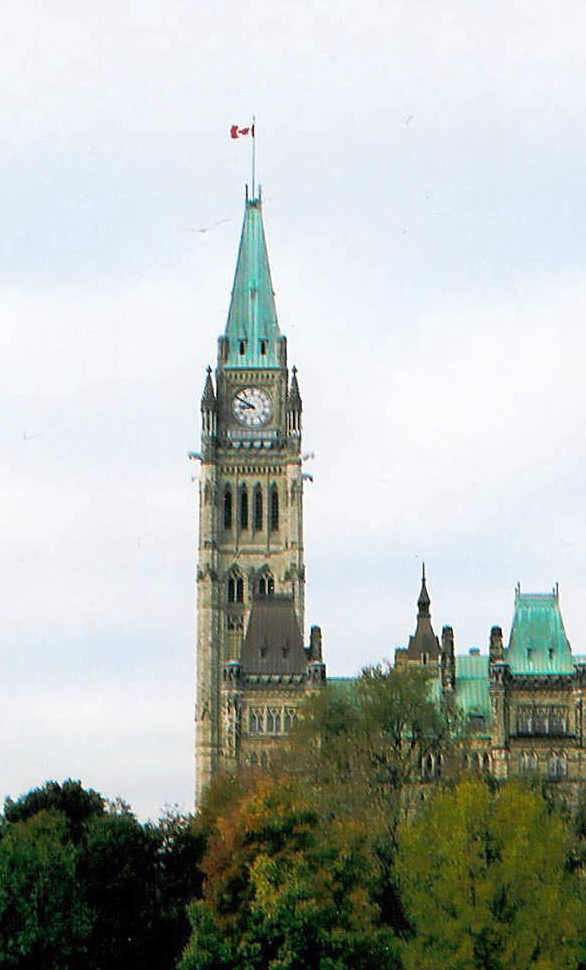One hundred years ago this month Europe stumbled into a catastrophic war after a Bosnian Serb assassinated the heir to the Austro-Hungarian throne along with his wife in Sarajevo. The great powers lined up in their alliances and when Great Britain declared war on Germany in August 1914, Canada, as a British colony, was automatically plunged into a conflict that killed and maimed an astonishing 37 million people. Among them were 61,000 Canadian dead and another 150,000 wounded.
The Globe and Mail reports that the Conservative government plans to spend $83 million over the next six years to commemorate this and other of Canada’s wars — a figure that does not include the $30 million already spent celebrating the War of 1812. Among the plans is one to rededicate the National War Memorial in Ottawa.
A group called PeaceQuest, however, says that although it respects the military sacrifices made by Canadians, it believes that the government should also rededicate the Peace Tower on Parliament Hill. And if it won’t, then citizens should.
This poses an interesting clash of iconic images. The 92-metre Peace Tower, perhaps the country’s most recognized monument, serves as a backdrop each year to Canada Day ceremonies. The tower was initially designed as a monument to Canadians who died during the First World War but it also contains strong peace elements — including a stone sculpted dove — which describe a desire for peace.
The National War Memorial is the backdrop for annual Remembrance Day ceremonies, which always have a militaristic tinge to them. The memorial was built to commemorate the response of Canadians in the First World War but ironically it was unveiled in May 1939, just months before the onset of the Second World War.
The Globe and Mail quotes from a document in which the chief of Defence Staff outlines commemorative plans based on the belief that Canada’s unique identity “stems in significant part from its achievement in times of war.”
Although I have no access to Defence Department deliberations, I was able to wander into a recent meeting of PeaceQuest in an Ottawa church hall. PeaceQuest originated in Kingston, Ontario and now has a small chapter in Ottawa, with similar plans for other cities and towns. One of those involved is Jamie Swift, who works in Kingston for The Sisters of Providence of St. Vincent de Paul, and is the co-author of the book, Warrior Nation: Rebranding Canada in an Age of Anxiety.
Swift explained that PeaceQuest is not interested in a partisan effort or the politics of opposition. Instead, it wants to provide a “counter narrative” to the government’s attempts to paint Canada as a militaristic nation. He says that PeaceQuest encourages people to look at Canada in more broad terms. Nor does PeaceQuest intend to create a new organization. It has chosen rather, to provide thought and resources that will be of interest to people in their faith groups, in schools and in among writers and artists.
In the group meeting in Ottawa, a number of potential plans were discussed. Several, in addition to rededicating the Peace Tower, piqued my interest. One is to build upon the Christmas Truce of Dec. 24, 1914, when German soldiers in the trenches along the Western front in Belgium and France sang carols and decorated Christmas trees. Before long (and much to the chagrin of their senior officers), soldiers from both sides exchanged greetings and presents and engaged in a soccer game on no-man’s land. This amounted to an informal ceasefire that lasted up to a week in some areas along the trenches.
The event has been memorialized in books and a video, and people at the PeaceQuest meeting talked about ways to celebrate that same spirit of peace in December 2014. So stay tuned.
This piece appeared in slightly different form as a United Church Observer blog on July 9, 2014.




